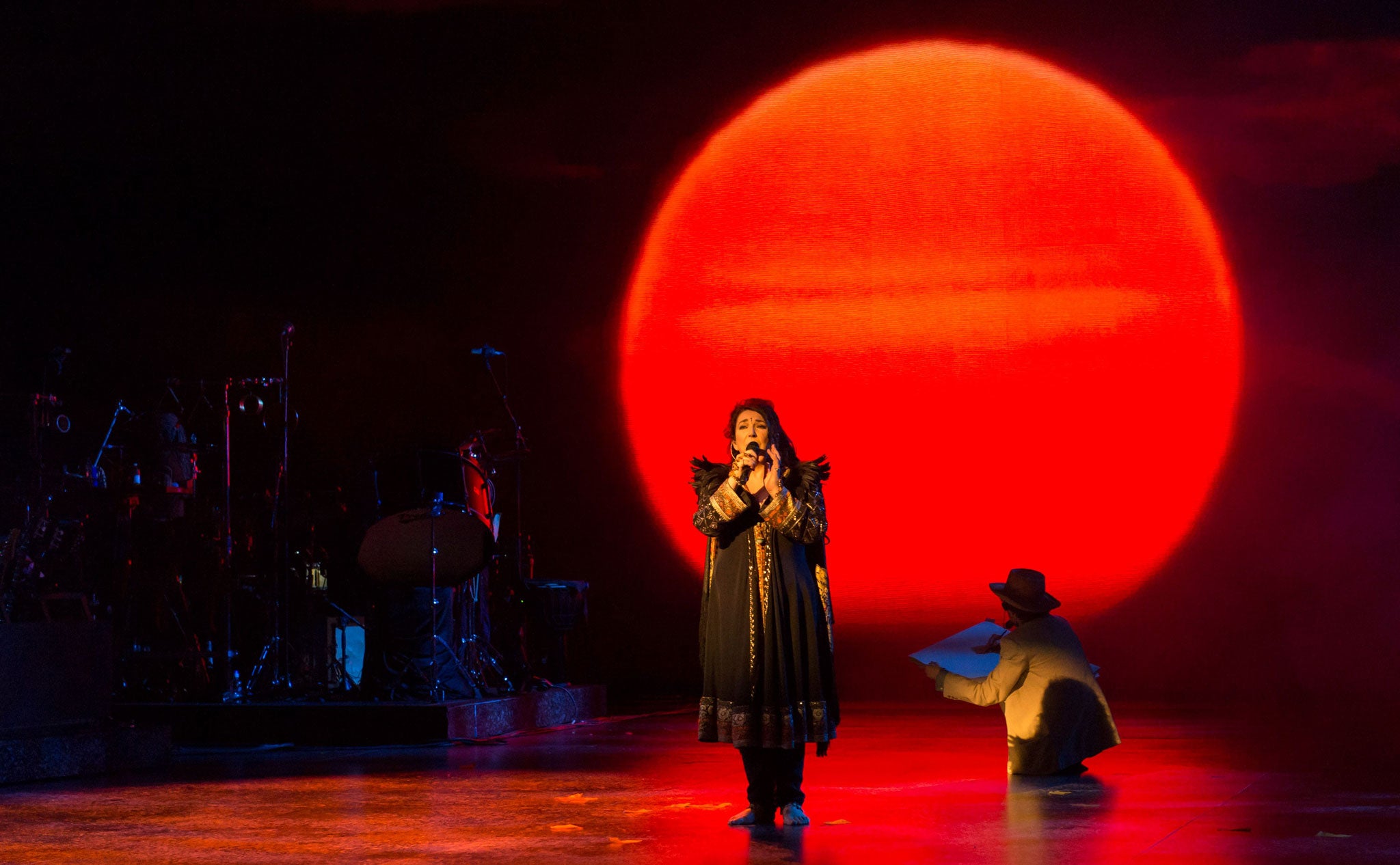Books of the year 2014: Music, from Jerry Lee Lewis and John Lydon to Kate Bush
Rock 'n' roll's rebels without causes filed reports from their career frontlines while critic Greil Marcus revealed The History Of Rock 'n' Roll In Ten Songs

Your support helps us to tell the story
From reproductive rights to climate change to Big Tech, The Independent is on the ground when the story is developing. Whether it's investigating the financials of Elon Musk's pro-Trump PAC or producing our latest documentary, 'The A Word', which shines a light on the American women fighting for reproductive rights, we know how important it is to parse out the facts from the messaging.
At such a critical moment in US history, we need reporters on the ground. Your donation allows us to keep sending journalists to speak to both sides of the story.
The Independent is trusted by Americans across the entire political spectrum. And unlike many other quality news outlets, we choose not to lock Americans out of our reporting and analysis with paywalls. We believe quality journalism should be available to everyone, paid for by those who can afford it.
Your support makes all the difference.Two of rock 'n' roll's most notorious rebels without causes filed reports from their career frontlines this year: the subjects of both Jerry Lee Lewis, His Own Story by Rick Bragg (Canongate, £20) and Anger Is an Energy by John Lydon (Simon & Schuster, £20) take pains to emphasise their cussed self-determination, claiming not to care what readers thought of them.
But while Lydon seems keen to claim the moral high ground in points-scoring battles with former acquaintances – notably Malcolm McLaren and Vivienne Westwood – Lewis gives the distinct impression of being utterly disinterested in morality, not least the dubious rectitude of marrying his 13-year-old cousin.Lewis summarises his music's character as: "Like a rattlesnake – it warns you, 'Listen to this'"; Lydon's more pranksterish attitude comes through in his admission: "I'm a fairground attraction: I like the funfair, I like the chaos."
Clothes Clothes Clothes Music Music Music Boys Boys Boys by Viv Albertine (Faber, £14.99) covers the same punk/new wave territory as Lydon's book, but is better-written, and less irritatingly attitudinal. It's particularly insightful about the travails of overturning rock's entrenched gender bias (Albertine was guitarist with seminal fem-punk combo The Slits) and also offers the most accurate account of significant '70s music developments, in which Zappa, Roxy and Can outweigh the Abba-centric image fostered by TV clips shows.
Another great British outsider's career is addressed in the Robert Wyatt biography Different Every Time by Marcus O'Dair (Serpent's Tail, £20), a serious and thoughtful reflection on a serious and thoughtful life, which places music and politics squarely at the heart of his endeavour. It's revealing, for instance, that Wyatt was more emotionally scarred by being kicked out of the band he had founded, The Soft Machine, than by the paraplegism resulting from a drunken party accident: indeed, he regards the latter as effectively the true start of his career. This year also saw the rise of the lyric-manuscript book, exemplified by The Beatles Lyrics by Hunter Davies (Weidenfeld & Nicolson, £25), in which the author's flimsy reflections bulk out the fascinating facsimiles of scribbled lyric notes jotted on scraps of paper, which sometimes afford insights into the development from the germ of an idea to a finished song.
So This Is Permanence by Ian Curtis (Faber, £27) does the same thing for the late Joy Division singer, with the additional appendix of well-thumbed book-covers from his library – Artaud and Rimbaud, Sartre and Dostoevsky – hinting at the autodidact turmoil that contributed to his suicide. Packaged in grainy grey cloth, it has the sombre beauty of a tombstone. Curated by the singer's sister Gabrielle Drake, Remembered For A While by Nick Drake (John Murray, £35) goes further, collating not just the late singer's manuscripts but just about every press clipping, advert and photo of his brief life and career. It includes father Rodney's diary entries, Gabrielle's recollections and substantial exegeses by critics and acquaintances.
The most intriguing of this year's photo-books is surely Cathy by John Carder Bush (Little Brown, £40), a luxuriously clothbound slipcase edition of childhood photos of Kate Bush, with annotations by the photographer, her older brother. If ever the roots of an artist were revealed in their youthful manner, it's here: surrounded by hippy music, adopting dress-up characterisations with alacrity and already staring, haunted, into the distance, she's a natural performer in search of a stage.
Woody Guthrie And The Dust Bowl Ballads by Nick Hayes (Jonathan Cape, £20) is a graphic novel presenting the autobiographical narrative of Guthrie's Bound For Glory from a third-person perspective. It's beautifully rendered in sepia-tint tones, the almost woodblock vernacular style embodying the singer's demotic appeal, with Guthrie's sly, narrowed eyes and pointed chin evoking the rebellious acuity of his observations.
Elsewhere, The Dylanologists by David Kinney (Simon & Schuster, £16.99) focuses on his most fanatical followers. It's a fascinating, sometimes bewildering survey of obsessional devotion: while one fan's acquisition of Dylan's birthplace is readily justifiable on curatorial grounds, as a possible future museum, his purchase of the toddler Bobby Zimmerman's high-chair seems rather less defensible.
Finally, The History Of Rock 'n' Roll In Ten Songs by Greil Marcus (Yale University Press, £16.99) is another of the professorial critic's attempts to dismantle the collective pantheon of rock history in favour of more individual, personal networks of cross-pollination. It's smart and well-written: I love the description of Ian Curtis's performance style as that of "a marionette who has just discovered that his movements are not his but can't remember a puppetmaster".
Join our commenting forum
Join thought-provoking conversations, follow other Independent readers and see their replies
Comments